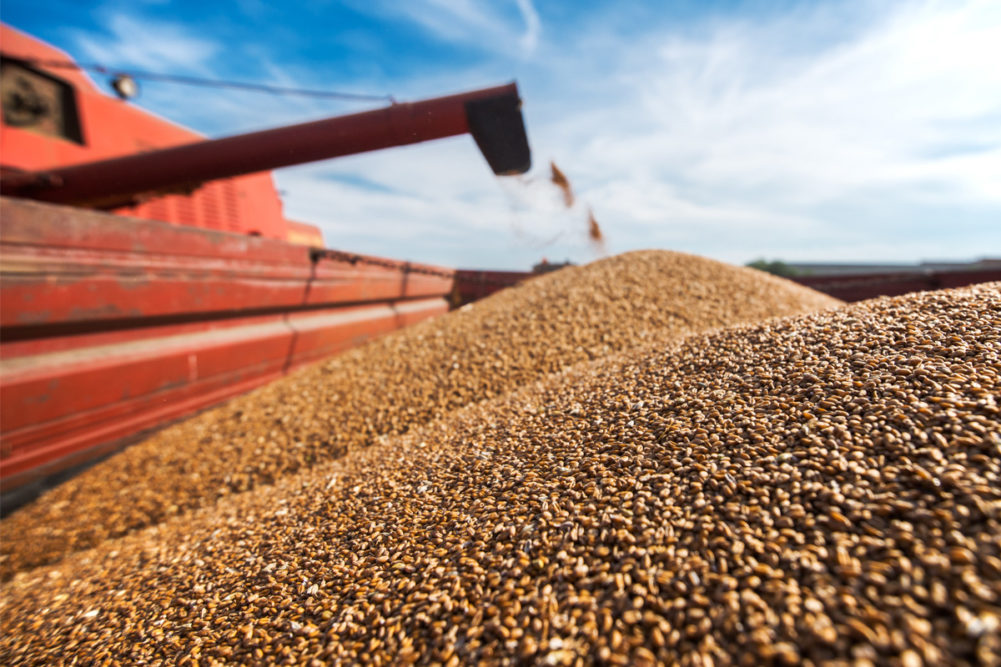US wheat elevators vulnerable to Russian exports

DENVER, COLORADO, US — Profitability prospects are improving for US grain elevators that store wheat, but a sharp rally in wheat prices that could be triggered by any disruption to the flow of Russian exports through the Black Sea remains a risk, according to a new report from CoBank’s Knowledge Exchange.
Futures market carries have improved for all three major classes of wheat, a trend that comes after two years of poor production and a historic run of inverted futures markets that sapped profits in storing wheat, said Tanner Ehmke, grains and oilseed economist for CoBank.
The major risk in the year ahead is a sharp rally in wheat prices. Potential disruptions to Russian exports in the Black Sea could result in extreme market volatility, given the historically tight stocks in major wheat exporting countries.
“The flood of cheap Russian wheat into the global market may have created a false sense of security in the world wheat market,” Ehmke said. “The greatest margin risk to storing wheat is the shrinking world wheat crop outside of Russia and China, which leaves the market vulnerable to supply shocks and extreme volatility in wheat prices.”
The cost of storing grains, including wheat, remains historically high due to the sharp rise in interest rates. As a result, elevators will still struggle to pencil in profit on the wider carries, particularly for the hard wheats, he said. Elevators struggling to make margin on carries will be looking for opportunities to benefit from rising basis on company-owned grain through the marketing year.
The rebound in the US wheat harvest largely was driven by a substantial increase in soft red winter wheat yields in the Midwest, where farmers produced the biggest crop in nine years. This year’s soft red winter wheat harvest rose 31% year-over-year, based on USDA’s latest estimates.
With ample supply, elevators will benefit from exceptionally wide carries in the futures market and the variable storage rate that adds about 3 cents per bushel to the futures spread.
In the Central and Southern Plains, production of hard red winter wheat lost significant yield under ongoing drought. Overall production rose 10% year-over-year, according to USDA estimates, with gains attributable to expanded acreage.
The hard red spring harvest in the Northern Plains is expected to fall 7% year-over-year despite expanded acreage, according to the USDA.
Blending this year’s wheat crop will be a tightrope for elevators, millers and bakers that are challenged to find low- to medium-protein hard wheat in a market saturated with high protein, Ehmke said. With the hard wheats trading at a sizable premium, millers and bakers will be motivated to blend more soft red wheat with hard wheat. However, blending will be limited due to stark differences in mixing and baking performance.
The flood of cheap Russian wheat into the global market, combined with a strong US dollar, continue to be major headwinds for US wheat exports. Russia’s currency has fallen sharply, down 30% year-to-date, putting Russian exports on sale and pushing down world wheat prices. Russia is currently harvesting a near-record wheat crop with substantial carryover inventories from last year’s record-sized harvest.
In China, wet weather during harvest damaged a substantial portion of the Chinese wheat crop, which likely will result in China increasing wheat imports, Ehmke said.
Excluding Russia and China, the world’s wheat stocks-to-use ratio is nearly the tightest on record. Drought has substantially reduced wheat supply in Argentina, Canada and Australia. Ukraine’s wheat harvest faces numerous obstacles to being delivered to the world market due to the ongoing Russia-Ukraine war.Weak performance with the North African wheat crop also will translate into greater demand for imports, as will India’s ban on white rice exports. The ban is shifting food demand from rice to wheat in major importing regions like Southeast Asia and Africa.
Source Link :- https://www.world-grain.com/articles/19059-us-wheat-elevators-vulnerable-to-russian-exports














